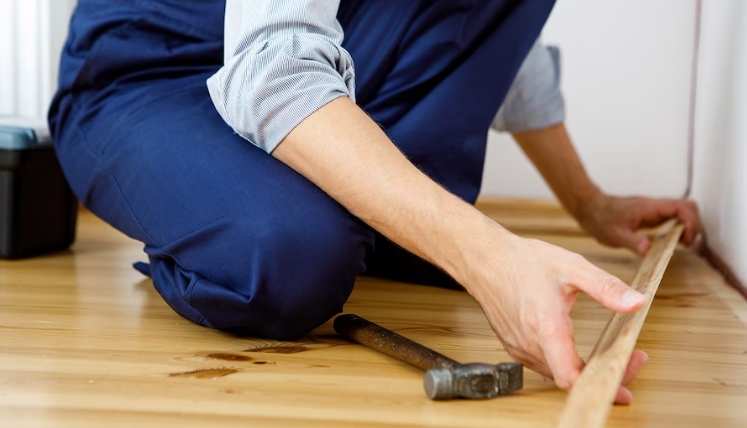Introduction
Removing baseboards and trim might seem like a straightforward task, but it requires careful handling to avoid damage to your walls, the trim, or even the baseboards you might want to reuse. In this guide, we’ll walk you through the steps to remove baseboards and trim safely and effectively, using the right tools and techniques.
Why Remove Baseboards and Trim?
There are several reasons you might need to remove baseboards and trim:
- Renovation or Remodeling: Whether you’re repainting, installing new flooring, or updating your room’s look, removing the baseboards and trim can be a necessary step.
- Repairing Damages: Sometimes, baseboards and trim need to be removed to repair damages caused by water, pests, or wear and tear.
- Upgrading: Replacing old or outdated baseboards and trim can significantly enhance the aesthetics of your home.
Tools You Will Need
Before you start, ensure you have the right tools for the job. Here’s what you’ll need:
- Putty Knife: A putty knife will help you create an initial gap between the wall and the trim.
- Pry Bar: A small pry bar is essential for gently lifting the baseboards away from the wall.
- Hammer: This will be used in conjunction with the pry bar.
- Utility Knife: Use this to cut through any paint or caulk sealing the top edge of the trim to the wall.
- Protective Gear: Safety glasses and gloves are recommended to protect yourself from sharp objects and debris.
Step-by-Step Guide
Step 1: Prepare the Area
- Clear the area around the baseboards. Remove any furniture or obstacles.
- Use a drop cloth to protect the flooring from scratches or debris.
Step 2: Cut Through the Caulk
- Run the utility knife along the top edge of the trim where it meets the wall. This cuts through the caulk or paint seal and makes it easier to pry off the baseboards.
- Be gentle to avoid damaging the wall.
Step 3: Create a Gap with Putty Knife
- Insert the putty knife between the wall and the trim.
- Wiggle it gently to create a small gap. This step helps to prevent the wall from getting damaged when you use the pry bar.
Step 4: Pry the Baseboard Off
- Insert the pry bar into the gap created by the putty knife.
- Use gentle force to start prying the baseboard away from the wall. Work your way along the trim.
- If the baseboard is nailed, you’ll feel resistance. Carefully pry at these points to loosen the nails without breaking the trim.
Step 5: Remove Nails and Clean Up
- Once the trim or baseboard is off, remove any protruding nails from the wall or the wood itself.
- Use pliers or the back of your hammer to pull out the nails.
- Clean up any leftover debris or dust.
Tips for a Successful Removal
Tip 1: Work Slowly and Carefully
- Rushing the process increases the risk of damaging the walls or the trim. Take your time, especially when working around corners or tight spots.
Tip 2: Use the Right Angle
- When prying off the baseboard, keep the pry bar as parallel to the wall as possible. This reduces the pressure on a single point, minimizing wall damage.
Tip 3: Protect the Wall
- You can place a small piece of wood or a flat tool between the pry bar and the wall. This distributes the force and protects the wall from pry bar marks.
Tip 4: Mark the Pieces
- If you plan to reuse the same baseboards and trim, number them as you remove them. This makes it easier to put them back in the correct order.
Tip 5: Be Prepared for Repairs
- Despite your best efforts, some minor damage to the wall or paint might occur. Have spackle and touch-up paint ready for quick fixes.
Reinstalling Baseboards and Trim
If you plan to reinstall the same baseboards or trim, here’s what you need to do:
Step 1: Clean and Prep
- Remove all the old nails and smooth out any rough spots.
- Clean the baseboards thoroughly.
Step 2: Measure and Cut (if necessary)
- If you’re reconfiguring the room or made changes, some trimming and cutting might be needed.
- Measure twice, cut once to ensure accuracy.
Step 3: Nail in Place
- Align the baseboards or trim back in place.
- Nail them in using a nail gun or hammer, making sure they are straight and level.
Step 4: Caulk and Paint
- Caulk the top edge where the trim meets the wall to seal any gaps.
- Once the caulk is dry, touch up with paint for a finished look.
Conclusion
Removing baseboards and trim without damage is a skill that can save you time and money in home repairs and renovations. With the right tools and techniques, you can ensure a successful removal and reinstallation, maintaining the integrity and beauty of your home. Remember, patience and precision are key.
As you embark on your next home improvement project, consider the various high-quality tools available on our website. From utility knives to pry bars, we have everything you need to make your DIY projects a success. Visit us today and equip yourself for your next home adventure!


